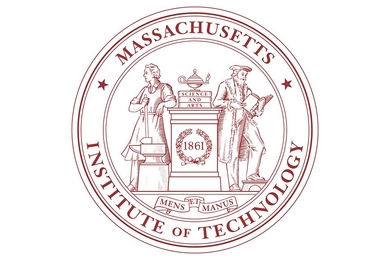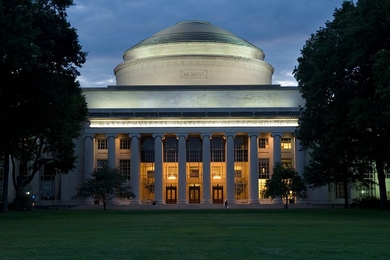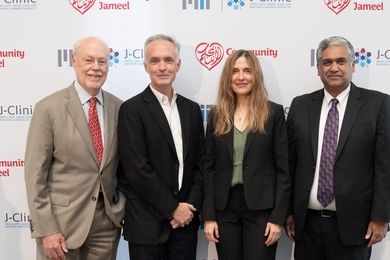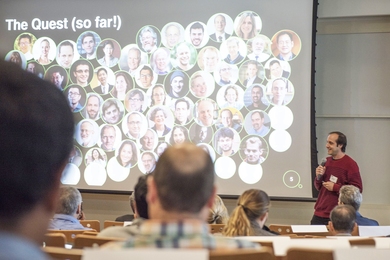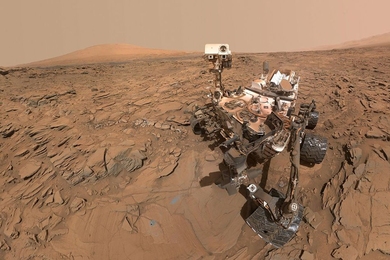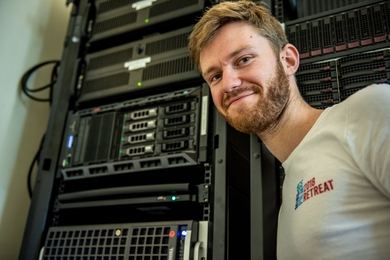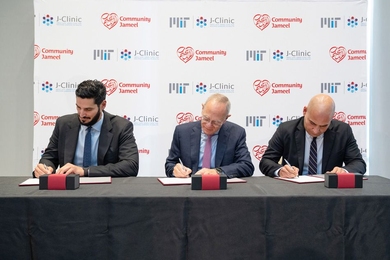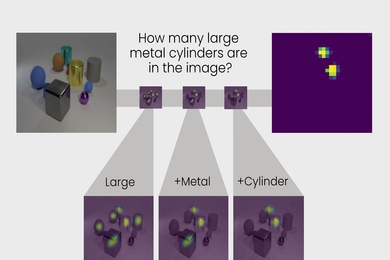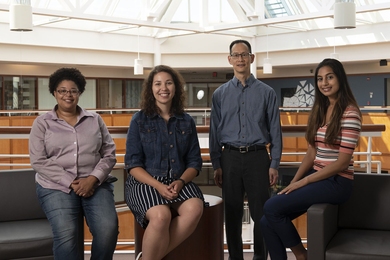MIT reshapes itself to shape the future
Gift of $350 million establishes the MIT Stephen A. Schwarzman College of Computing, an unprecedented, $1 billion commitment to world-changing breakthroughs and their ethical application.
Model helps robots navigate more like humans do
In simulations, robots move through new environments by exploring, observing, and drawing from learned experiences.
Regina Barzilay, James Collins, and Phil Sharp join leadership of new effort on machine learning in health
MacArthur “geniuses” in machine learning and synthetic biology to serve as faculty co-leads; Nobel laureate to chair advisory board of new research center.
Ideas abound at Quest for Intelligence workshop
Community event generates ideas for sparking innovative and ambitious plans to advance research in human and machine intelligence.
Software finds the best way to stick a Mars landing
Program users can tinker with landing and path planning scenarios to identify optimal landing sites for Mars rovers.
3Q: Antonio Torralba on what's next for the Quest for Intelligence
Inaugural director of The Quest discusses what's been accomplished since last spring's launch and what is on the horizon.
Recognizing the partially seen
Advances in computer vision inspired by human physiological and anatomical constraints are improving pattern completion in machines.
Reducing false positives in credit card fraud detection
Model extracts granular behavioral patterns from transaction data to more accurately flag suspicious activity.
Machine-learning system tackles speech and object recognition, all at once
Model learns to pick out objects within an image, using spoken descriptions.
Abdul Latif Jameel Clinic for Machine Learning in Health at MIT aims to revolutionize disease prevention, detection, and treatment
A key part of the MIT Quest for Intelligence, J-Clinic builds on MIT expertise across multiple scientific disciplines.
Helping computers fill in the gaps between video frames
Machine learning system efficiently recognizes activities by observing how objects change in only a few key frames.
Artificial intelligence system uses transparent, human-like reasoning to solve problems
Model from MIT Lincoln Laboratory Intelligence and Decision Technologies Group sets a new standard for understanding how a neural network makes decisions.
MIT undergraduates to embark on The Quest
Up to 100 Quest-funded UROP projects aim to crack the code of human and machine intelligence.
Taking machine thinking out of the black box
Adaptable Interpretable Machine Learning project is redesigning machine learning models so humans can understand what computers are thinking.
